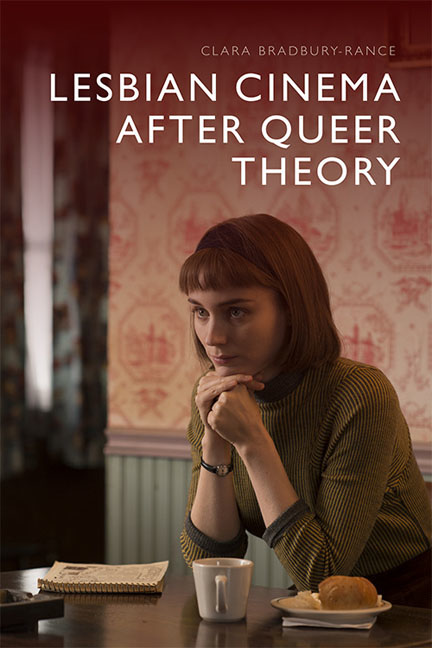Book contents
- Frontmatter
- Contents
- List of Figures
- Acknowledgements
- Preface
- Introduction: Looking after Lesbian Cinema
- 1 The Woman (Doubled): Mulholland Drive and the Figure of the Lesbian
- 2 Merely Queer: Translating Desire in Nathalie … and Chloe
- 3 Anywhere in the World: Circumstance, Space and the Desire for Outness
- 4 In-between Touch: Queer Potential in Water Lilies and She Monkeys
- 5 The Politics of the Image: Sex as Sexuality in Blue Is the Warmest Colour
- 6 Looking at Carol: The Drift of New Queer Pleasures
- Conclusion: The Queerness of Lesbian Cinema
- Notes
- Filmography
- Bibliography
- Index
Introduction: Looking after Lesbian Cinema
Published online by Cambridge University Press: 14 December 2019
- Frontmatter
- Contents
- List of Figures
- Acknowledgements
- Preface
- Introduction: Looking after Lesbian Cinema
- 1 The Woman (Doubled): Mulholland Drive and the Figure of the Lesbian
- 2 Merely Queer: Translating Desire in Nathalie … and Chloe
- 3 Anywhere in the World: Circumstance, Space and the Desire for Outness
- 4 In-between Touch: Queer Potential in Water Lilies and She Monkeys
- 5 The Politics of the Image: Sex as Sexuality in Blue Is the Warmest Colour
- 6 Looking at Carol: The Drift of New Queer Pleasures
- Conclusion: The Queerness of Lesbian Cinema
- Notes
- Filmography
- Bibliography
- Index
Summary
The unprecedented increase in lesbian representation in political, social and cultural spheres over the past two decades has coincided with a shift in theo-retical consciousness. In a paradoxical feat of what could be called unhappy timing, the lesbian's delayed and uneasy path towards visibility has coincided with queer theory's dominance in the academic study of sexuality. The result has been a comparable invisibility in the very intellectual field that might have accounted for these representational transformations. Lesbian Cinema after Queer Theory takes this up as a structuring problem. Queer theory has gener-ated a new field of figurations, pushing at the limits of lesbian legibility. It has also generated the potential for nuanced and sensitive renderings of debates about sexuality on the screen. While timely, politically significant and intellec-tually exhilarating, such changes provide a provocation to the lesbian whose identification is often dismissed and disavowed as an anachronistic term of attachment. As one such lesbian, claiming my identity category even as I am invigorated by its disruption, I ask: what does it mean to write about lesbian cinema after queer theory?
As this project began to unfold, circa 2011, I found myself looking for a corpus that would chronicle the new visibility of lesbian cinema. What I did not anticipate was the question: ‘but Clara, what is lesbian cinema?’ Two women are aligned across time and space by a coloured filter reflect-ing and obscuring their image. A gaze is shared between two girls across discrete shots, spatially disconnected but aligned by framing. A woman reclines face-on in the background behind her lover who lies in profile in the foreground, their two sets of lips fused on the two-dimensional screen. Another tells explicit sexual stories to a companion who watches as intently as she listens. A young woman's fantasy of a stranger is signified through flashes of colour. A teenage girl's gaze isolates its object but is left unnoticed and unreturned. Another kisses the trace of lipstick left by a playful kiss on a window pane. Here is a series of cinematic moments that read, to me, as lesbian. But the word lesbian no longer seems to allow for their full descrip-tion. It does not fully account for their complexity, excitement, anticipation, ambivalence and intractability.
- Type
- Chapter
- Information
- Lesbian Cinema after Queer Theory , pp. 1 - 15Publisher: Edinburgh University PressPrint publication year: 2019



